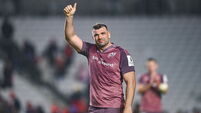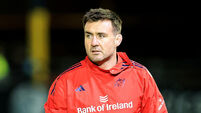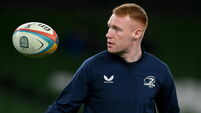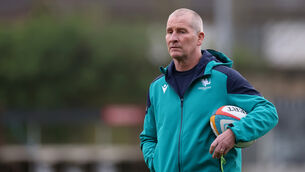'It is a recipe for disaster. I've never seen so many ACLs as I have in the last few weeks'
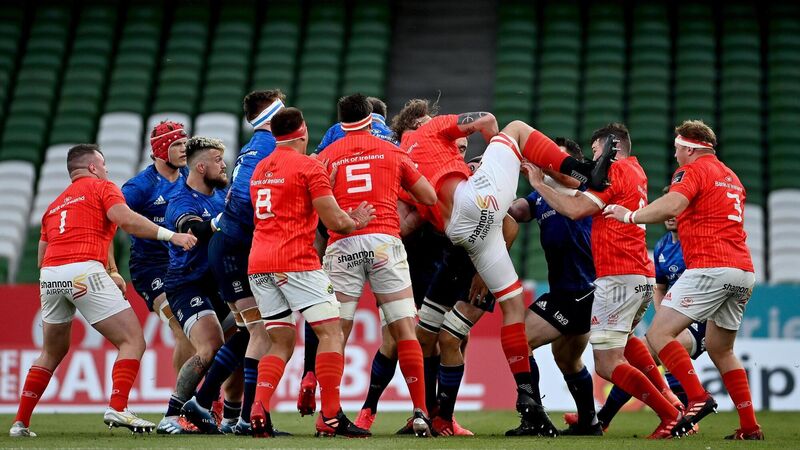
More than one of his new teammates has described RGT Snyman as freakish since his arrival in Ireland
It's not just the sheer size of the South African lock but the physical power he can generate and the sublime skills that sit so comfortably along with all that. An all-round package that Munster had hoped to employ to considerable effect in the months and years to come.
There is nothing freakish about the ACL injury Snyman suffered last Saturday.
In that, he is perfectly normal.
The Munster lock tore the anterior cruciate ligament in his left knee just seven minutes into his debut for Munster against Leinster. ACL injuries have long been a common curse but Declan Bowler, a consultant orthopaedic and sports surgeon at the Bon Secours Hospital in Cork, is having more and more reason to bite his lip these days.
“We are in the middle of a pandemic, unprecedented times, and certainly from where I am sitting here at the Bons in Cork, there has been a huge number of knee injuries in the last few weeks since the lockdown restrictions have eased and teams have started to play again,” he explained.
“It's anecdotal evidence, but I suspect it is a combination of guys who haven't been playing for a while because of restrictions, haven't done any pre-season conditioning, the grounds are hard and the various sporting bodies are trying to compress games in together to try and finish things off the season.
ACL injuries are particularly common in 'pivot' sports where athletes turn quickly or, in Snyman's case, land awkwardly. Anything that involves a ball is an obvious candidate. Bowler is seeing lots of teenagers and plenty of college kids present with this problem right now.
As the name suggests, the ACL is an important component in the knee.
It is the ACL that maintains the joint's stability, especially when twisting and turning. Not everyone needs surgery when it goes but you will if you need to do much more than run in a straight line or zip through a slight bend. If you play team sports then an operation is your path and it isn't a short recovery.
Seven months is the average recovery time but everyone is different. Some can take a year, others can be fit again in five months. A partial tear obviously makes for a faster recovery and a player in a professional environment, as with Munster who have expert medical staff and S&C programmes at hand, can speed up the process.

Problem is, it isn't necessarily just the ACL that may require attention. Parts of the body do not exist in isolation and all too often, maybe 50-70% of the time, there is a tear in the meniscal tissue, which acts as the shock absorber, as well. If that isn't repaired then the risk of arthritis in later years shoots up and these tears can be either obvious or subtle.
Even the grafts used to repair the damage can differ. If the patient is a club footballer who spends hours on his knees every day as an electrician or a plumber then the hamstring will be used for the graft rather than the patellar tendon which extends down from the thigh muscle and attaches the knee cap to the shin bone.
“But you also have to minimise the risks of it happening again. The chance of it tearing again would be in single digits but you can also tear the other side. So there is a lot of variables that you have to discuss and explain to the patient.”
Bowler relays all of this in a clear and concise manner. Medical jargon is limited. They are practised words delivered by a man accustomed to taking new patients through the painful and daunting new reality that has been laid out in front of them.
Some of us are more susceptible to an ACL injury than others, regardless of the sport in question. Research suggests that this is the case for women and anyone aged under 25 is at a particularly high risk of tearing the ligament more than once.
Former Cork footballer Colm O'Neill endured this particular brand of agony three times. So did Republic of Ireland footballer Rianna Jarrett, in her case all before the age of 21. Kerry's David Moran went through ACL rehab twice but the list is endless.
Among the others to have suffered ACL setbacks are Henry Shefflin, Colm Cooper, Ciaran Kilkenny in Gaelic games; Chris Farrell, Dan Leavy, Stephen Fitzgerald and Luke Marshall in rugby; and the Cardiff City defender Greg Cunningham.
That's just a small sample of elite athletes here in Ireland. The AFL in Australia reporting eight ACL's per season in both 2018 and 2019 and the number of suspected case in the USA on an annual basis is in the six figures.
“It is literally happening every day," said Bowler. "In some respects that is frustrating. There are injury prevention and warm-up programmes out there which I would continue to encourage and for coaches to empower themselves in implementing those programmes.”
The GAA15 injury prevention programme can be accessed on the association's official website and similar supports are available on the Fifa and World Rugby equivalents.




